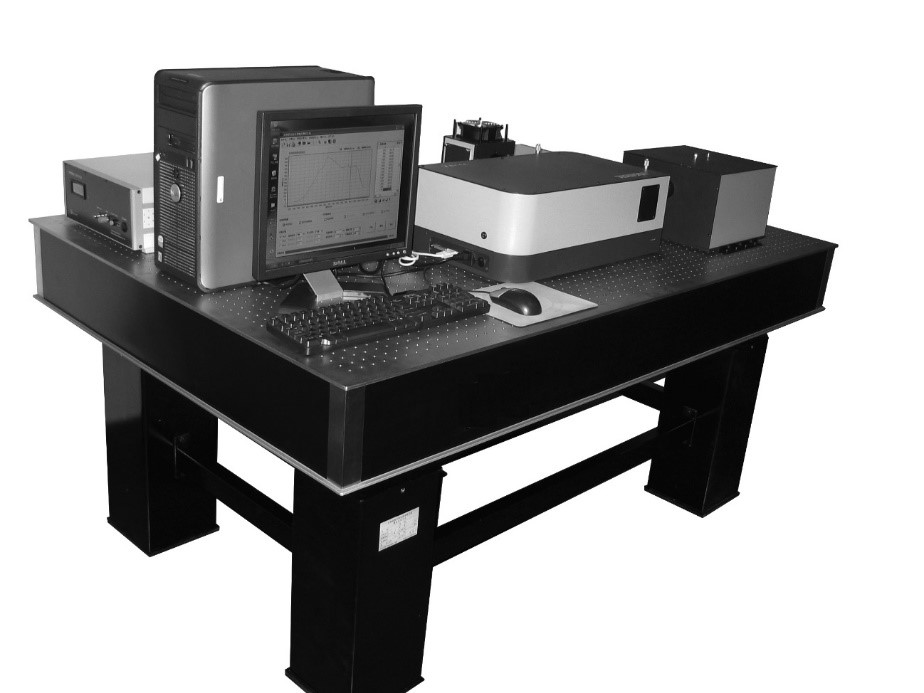Service hotline
+86 18518316054
 Current location : Home page > Products > Solar cell IV,QE/IPCE > CEL-QPCE2010 Solar Silicon Cell Spectral Response System (QE/IPCE)
Current location : Home page > Products > Solar cell IV,QE/IPCE > CEL-QPCE2010 Solar Silicon Cell Spectral Response System (QE/IPCE)

Model:CEL-QPCE2010
Place of Origin:Beijing
Detailed introduction
The radiation energy of the light source at different wavelengths is different, and the responsiveness of the detector at different wavelengths is also different, so the measured response current will also have a large difference. Assuming that the system noise N does not change and the response current S is large, the system signal-to-noise ratio (S/N) is large and will not affect the measurement accuracy, if the response current is small or even smaller than the system noise, so that S/N < 1, the accuracy of the measurement will be greatly affected at this time. To solve this problem, the system adopts the correlation detection method, which uses the correlation of signals in time to extract the periodic signals buried deep in the noise. The specific approach is: the light source is modulated by the chopper into a periodic signal with a fixed frequency (reference frequency), then the detector also outputs an electrical signal with the same frequency, and the electrical signal containing the reference frequency is detected by the lock-in amplifier, while the signal of other frequencies (noise) is suppressed, thus improving the signal-to-noise ratio of the system and ensuring the accuracy of the measurement.
Product Applications
Applicable cells: monocrystalline silicon, polycrystalline silicon solar cells; material performance analysis in AC analysis mode
Test items: absolute spectral response, external quantum efficiency, spectral transmittance, spectral reflectance (optional), internal quantum efficiency (optional), short-circuit current density under standard solar AM1.5G irradiation, surface uniformity, etc.
1) External quantum efficiency test: Using the measurement of the spectral response of the solar cell, the quantum efficiency η(λ) of the solar cell can be derived.
2) Spectral reflectance test: The monochromatic light output from the monochromator is input into the integrating sphere, and the standard white plate with known spectral diffuse reflectance and the solar cell under test are put into one opening of the integrating sphere respectively, and the output spectral current of the detector at the other opening of the integrating sphere is measured, and the absolute spectral reflectance curve is obtained by comparing.
(3) Spectral transmittance test: test the spectral current/voltage value of the standard detector when the sample is put into the sample chamber and when the sample is not put in, and compare it with the transmittance of the sample to get the transmittance of the sample, which can measure the spectral transmittance of the solar cell and also the spectral transmittance of the glass
(4) Internal quantum efficiency test: The internal quantum efficiency is obtained by deducting the influence of reflectance on the external quantum efficiency.
Specification parameters
Indicators | Parameters |
Applicable batteries | Monocrystalline silicon, polycrystalline silicon, semiconductor materials |
Control mode | Software control, fully automatic scanning, automatic error elimination, automatic background deduction |
Spectral range | 200-1100nm |
Scan interval | ≥1nm continuously adjustable |
Spectral scan | Fully automatic, continuous |
Repeatability of test results | <0.3% (short-circuit current) |
Operating mode | AC mode AC. |
Chopper frequency | 5-1000Hz |
Temperature control table. | Temperature control range 5-40℃(±0.5℃), optional |
Bias light source | Optional 2-way |
Monochromator | Focal length 300mm, 150mm optional |
